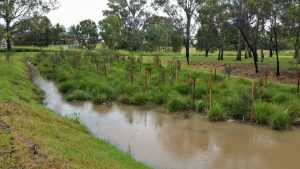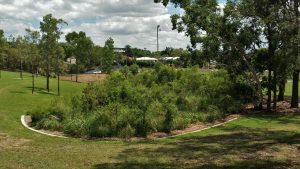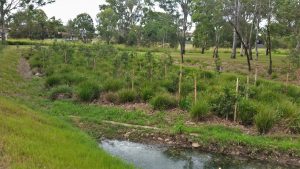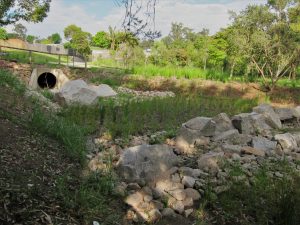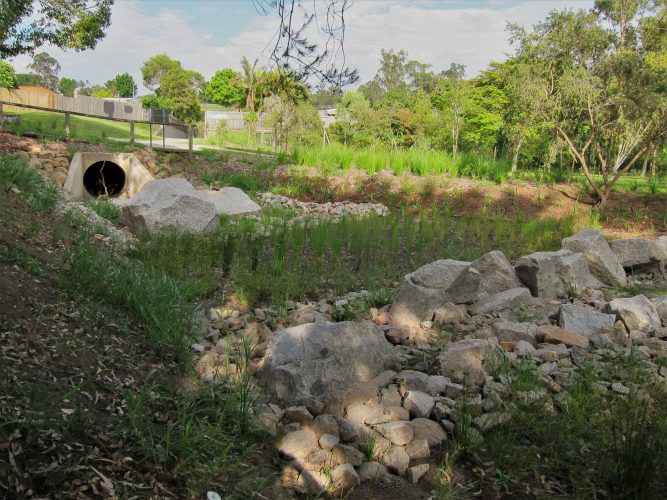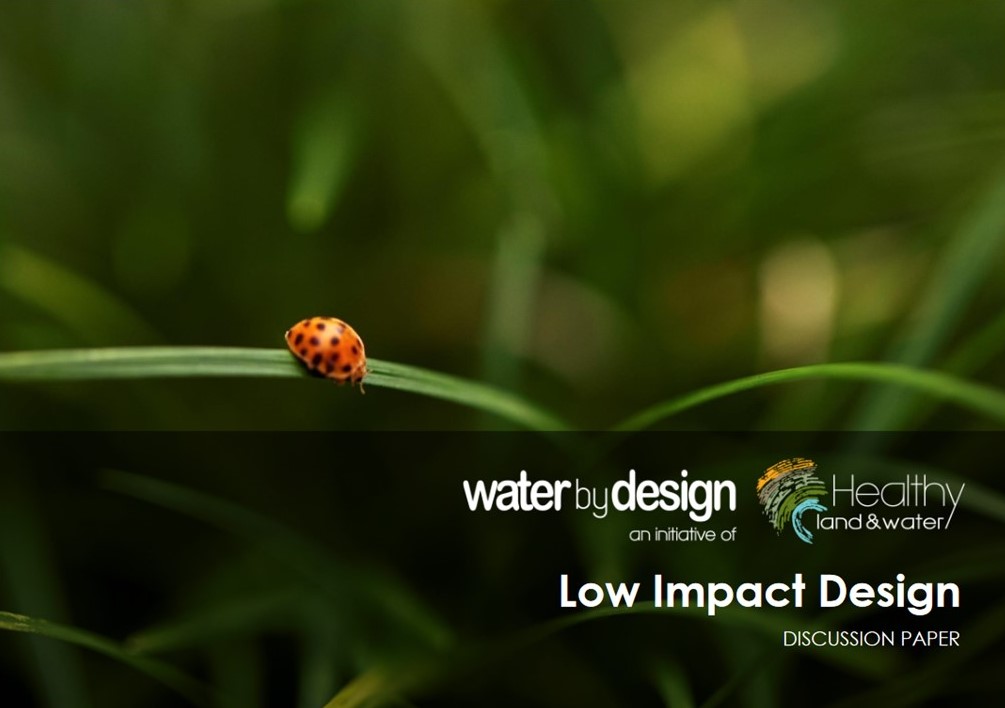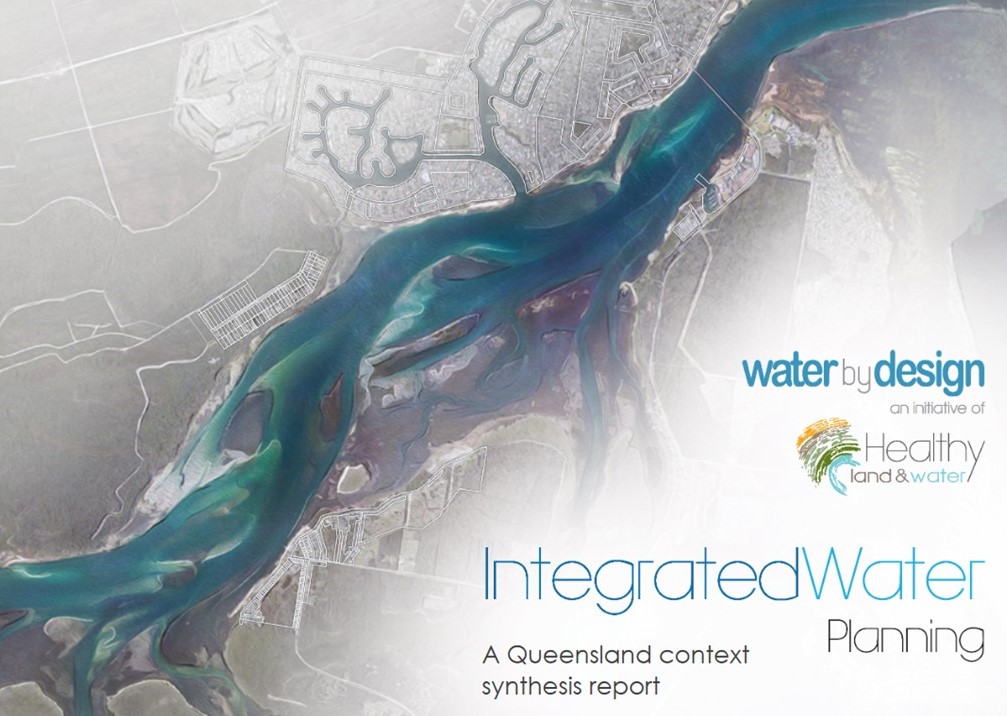Project summary
Brisbane prides itself as a clean, green and sustainable city, with waterways at its heart. From 2012 to 2015, Brisbane City Council constructed six, low capital and maintenance cost stormwater treatment systems across Brisbane. Known in Brisbane as ‘creek filtration systems’, these sites were delivered as a Lord Mayor’s Cleaner Waterways Initiative. The systems build upon well-established treatment approaches such as bioretention systems, level spreaders and swales to remove pollution from the city’s stormwater in a cost effective, affordable and aesthetically pleasing manner. Brisbane’s creek filtration systems won the 2015 Stormwater Queensland Award for Excellence in Integrated Stormwater Design.
Project scale and objectives
Six creek filtration systems were delivered across the suburbs of Greenslopes, Holland Park West, Oxley, Rocklea and Upper Kedron (two systems). The systems were retrofitted onto existing stormwater outfalls in parks, and ranged in size from 200m2 to 1500m2. They were designed with four goals in mind:
To be simple and cost little to maintain.
To be easy to construct and establish.
To improve waterway health through reducing pollution and mimicking natural hydrology.
To improve visual appeal and social amenity of creeks and surrounding areas.
Site context
Brisbane City Council was at the forefront of the initial development of stormwater treatment and water sensitive urban design; however, it faces unique challenges when it comes to mitigating the impact of its stormwater on its waterways. Unlike other local governments in Queensland, whose urban footprints continue to extend outwards, Brisbane has for the most part reached the limit to which it can expand. While other local governments can manage the impacts of stormwater in new urban development on their fringes, Brisbane City Council must find ways to manage these impacts within its existing urban form, where space is limited and the landform is already set. Their simplicity, amenity and ease of construction make creek filtration systems an ideal solution to retrofit onto existing stormwater drains that discharge into parks and waterways.
Issues and constraints
Each of the sites upon which a creek filtration system was built was different, and presented its own unique challenges that needed to be addressed during design. Site specific challenges included managing erosion risk and soil type, as well as flow velocities on the sites with larger catchments. Timing construction to avoid damaging storms also proved to be a challenge on one site.
More generally though, the short duration of the program (several years, compared to an ongoing, rolling program of work) posed some challenges of its own. For ongoing programs of work, relationships and processes are established and maintained over time. These ensure the smooth and timely delivery of the program. In the case of the creek filtration systems these relationships and processes needed to be established from scratch. They continued to evolve as the creek filtration systems were rolled out.
Construction and ongoing costs
The six creek filtration systems varied in both size and form, and construction costs varied accordingly. Critically though, costs were lower than comparable, traditional stormwater treatment systems. One creek filtration system for example, was constructed for approximately 30% less than a traditional bioretention system and will cost 80% less to maintain; all the while delivering similar water quality outcomes to a bioretention system, and better hydrologic and amenity outcomes.
Monitoring
Brisbane City Council applied a monitoring, evaluation, reporting and improvement (MERI) process to track and learn from sites as they were designed, constructed and as maintenance began.
Lessons learned
Brisbane City Council’s creek filtration systems demonstrate that it is possible to implement cost effective, aesthetically pleasing stormwater management systems into the existing urban fabric. In the process, lessons were learned about the importance of building relationships and understanding with stakeholders to ensure that the project intent is carried through its lifecycle. Lessons were also learnt about the ability for systems with functional ecosystems comprised of diverse species and plant types to establish into low maintenance systems, and the importance of managing velocities to prevent erosion.
Reference
Brisbane City Council website
Brisbane City Council case study
Conversation with Josh Luck (former BCC employee, now in private sector – involved in design of several systems)
Conversation with Mark Gibson (former BCC employee)
Photos – Jack Mullaly
